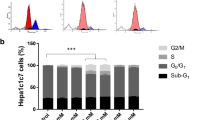Abstract
The present study compares different cytotoxicity and cell proliferation assays including cell morphology, mitochondrial activity, DNA synthesis, and cell viability and toxicity assays. CaSki cells were exposed to two cationic liposomal preparations containing dimethyldioctadecyl-ammonium bromide (DDAB), dioleoylphosphatidylethanolamine (DOPE) and a commercial transfection-reagent DOTAP(N[l-(2,3-dioleoyloxy)propyl]-N,N,N-trimethylammonium-methylsulfate). The results provided by these assays were similar. However, the lactate dehydrogenase assay was more sensitive in measuring early damages of cell membranes than the Trypan blue assay. Also, cell morphology showed early toxic changes, such as cytoplasmic vacuolization and cell shrinking, and it should be included with such toxicity evaluations. DDAB:DOPE was more toxic than DOTAP. The cells treated with DOTAP at 10 µM were surviving as well as the control cells, while DOTAP at 40 µM and DDAB: DOPE at 10 µM had slight toxic effects on CaSki cells. The most toxic effects were seen in CaSki cells after treatment with DDAB: DOPE at 40 µM.
Similar content being viewed by others
REFERENCES
J. H. Taylor, P. S. Woods, and W. L. Hughes. The organization and duplication of chromosomes as revealed by autoradiographic studies using tritium labelled thymidine. Biochemistry. 43:122–128 (1957).
H. G. Gratzner, R. C. Leif, D. J. Ingram, and A. Castro. The use of antibody spesific for bromodeoxyuridine for the immunofluorescent determination of DNA replication in single cells and chromosomes. Exp. Cell Res. 95:88–94 (1975).
T. Mosmann. Rapid colorimetric assay for cellular growth and survival: application to proliferation and cytotoxicity assays. J. Immunol. Methods. 65:55–63 (1983).
N. W. Roehm, G. H. Rodgers, S. M. Hatfield, and A. L. Glasebrook. An improved colorimetric assay for cell proliferation and viability utilizing the tetrazolium salt XTT. J. Immunol. Methods. 142:257–265 (1991).
A. H. Cory, T. C. Owen, J. A. Barltrop, and J. G. Cory. Use of an aqueous soluble tetrazolium/formazan assay for cell growth assays in culture. Cancer Commun. 3:207–212 (1991).
K. T. Brunner, J. Mauel, M. C. Cerottini, and B. Chapuis. Quantitive assay of the lytic action of immune lymphoid cells on 51Cr-labelled allogenic target cells in vitro: inhibition by isoantibody and by drugs. Immunology. 41:181–196 (1968).
C. Korzeniewski, and D. M. Callewaert. An enzyme-release assay for natural cytotoxicity. J. Immunol. Methods. 64:313–320 (1983).
T. R. Mosmann, and T. A. T. Fong. Spesific assays for cytokine production by T cells: a review. J. Immunol. Methods. 116:151–158 (1989).
F. Denizot, and R. Lang. Rapid colorimetric assay for cell growth and survival. J. Immunol. Methods. 89:271–277 (1986).
M. Ferrari, M. C. Fornasiero, and A. M. Isetta. MTT colorimetric assay for testing macrophage cytotoxic activity in vitro. J. Immunol. Methods. 131:165–172 (1990).
K. Heeg, J. Reimann, D. Kabelitz, C. Hardt, and H. Wagner. A rapid colorimetric assay for the determination of IL-2-producing helper T cell frequencies. J. Immunol. Methods. 77:237–246 (1985).
D. A. Scudiero, R. H. Shoemaker, K. D. Paull, A. Monks, S. Tierney, T. H. Nofziger, M. J. Currens, D. Seniff, and M. R. Boyd. Evaluation of a soluble tetrazolium/formazan assay for cell growth and drug sensivity in culture using human and other tumor cell lines. Cancer Res. 48:4827–4833 (1988).
A. Raza, C. Spiridonidis, K. Ucar, G. Mayers, R. Bankert, and H. D. Preisler. Double labeling of S-phase murine cells with bromodeoxyuridine and a second DNA-specific Probe. Cancer Res. 45:2283–2287 (1985).
P. L. Felgner, T. R. Gadek, M. Holm, R. Roman, H. W. Chan, M. Wenz, J. P. Northrop, G. M. Ringold, and M. Danielsen. Lipofection: a highly efficient, lipid-mediated DNA-transfection procedure. Proc. Natl. Acad. Sci. U.S.A. 84:7413–7417 (1987).
R. W. Malone, P. L. Felgner, and I. M. Verma. Cationic liposome-mediated RNA transfection. Proc. Natl. Acad. Sci. U.S.A. 86:6077–6081 (1989).
C. F. Bennet, M.-Y. Chiang, H. Chan, J. E. E. Shoemaker, and C. K. Mirabelli. Cationic lipids enhance cellular uptake and activity of phosphorothioate antisense oligonucleotides. Mol. Pharmacol. 41:1023–1033 (1992).
F. Cumin, F. Asselbergs, M. Lartigot, and E. Felder. Modulation of human prorenin gene expression by antisense oligonucleotides in transfected CHO cells. Eur. J. Biochem. 212:347–354 (1993).
A. R. Thierry, A. Rahman, and A. Dritschilo. Liposomal delivery as a new approach to transport antisense oligonucleotides. In R. P. Erickson and J. G. Izant (eds.), Gene Regulation: Biology of antisense RNA and DNA, Raven Press, Ltd. 2, NY, 1992, pp. 147–161.
R. Leventis and J. R. Silvius. Interactions of mammalian cells with lipid dispersions containing novel metabolizable cationic amphiphiles. Biochim. Biophys. Acta. 1023:124–132 (1990).
E. Yoshihara, and T. Nakae. Cytolytic activity liposomes containing stearylamine. Biochim. Bhiophys. Acta. 854:530–546 (1986).
Y. A. Hannun, and R. M. Bell. Functions of sphingolipids and sphingolipid breakdown products in cellular regulation. Science. 243:500–507 (1989).
L. Stamatatos, R. Leventis, M. J. Zuckermann, and J. R. Silvius. Interactions of cationic lipid vesicles with negatively charged phospholipid vesicles and biological membranes. Biochemistry. 27:3917–3925 (1988).
J. K. Rose, L. Buonocore, and M. A. Whitt. A new cationic liposome reagent mediating nearly quantitive transfection of animal cells. Biotechniques. 10:520–525 (1991).
K. Lappalainen, A. Urtti, I. Jääskeläinen, K. Syrjänen, and S. Syrjänen. Cationic liposomes mediated delivery of antisense oligonucleotides targeted to HPV 16 E7 mRNA in CaSki cells. Antiviral Reseach. 23:119–130 (1994).
A. M. Krieg. Uptake and efficacy of phospodiester and modified antisense oligonucleotides in primary cell cultures. Clin. Chem. 39:710–712 (1993).
A. A. van de Loosdrecht, E. Nennie, G. Ossenkoppele, R. H. J. Beelen, and M. M. A. C. Langenhuijsen. Cell mediated cytotoxicity against U 937 cells by human monocytes and macrophages in a modified colorimetric MTT assay. J. Immunol. Methods. 141:15–22 (1991).
M. Hansen, S. E. Nielsen, and K. Berg. Re-examination and further development of a precise and rapid dye method for measuring cell growth/cell kill. J. Immunol. Methods. 119:203–210 (1989).
Author information
Authors and Affiliations
Rights and permissions
About this article
Cite this article
Lappalainen, K., Jääskeläinen, I., Syrjänen, K. et al. Comparison of Cell Proliferation and Toxicity Assays Using Two Cationic Liposomes. Pharm Res 11, 1127–1131 (1994). https://doi.org/10.1023/A:1018932714745
Issue Date:
DOI: https://doi.org/10.1023/A:1018932714745




